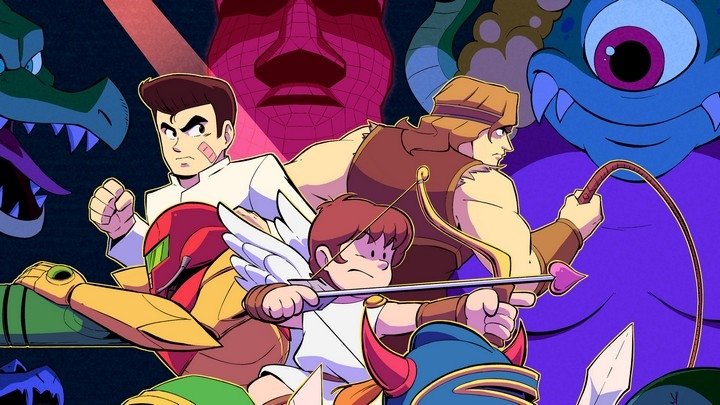With HyperZone, HAL Labs hurtled toward bankruptcy
A fascinating little game that underlined a great studio's desperate need for a hit in their pre-Kirby days.
Everyone knows the late Satoru Iwata became president of Nintendo in large part because his predecessor, Hiroshi Yamauchi, admired the way he elevated HAL Laboratories from near-bankruptcy and into a successful mainstay as a Nintendo development partner. That's hardly news; but the corollary to that fact is that at one point, HAL nearly went bankrupt. That notion seems strange to imagine now — the company has been a permanent fixture on Nintendo console for decades. I mean, HAL even has the unique distinction of having possession of one of Nintendo's core pantheon of mascot characters, Kirby.
25 years ago, however, the Kirby series had only just kicked off with the humble Kirby's Dream Land on Game Boy. Heck, Kirby himself wasn't even pink yet! And HAL was only just beginning to pull itself out of a financial mire that it had become stuck in during the late ’80s and early ’90s. While the company had impressive technical chops powering its software, HAL's library on NES and in the early Super NES and Game Boy days lacked a certain constancy. They were interesting creations, but none of them really screamed "smash hit."
Case in point: HAL's Super NES debut, HyperZone.
Falling somewhere between Square's 3D World Runner and Nintendo's F-Zero in terms of design and tech, HyperZone certainly looked dazzling at first sight. Not only did it do the F-Zero racetrack thing with Mode 7 effects, it did it twice: Both above the player's craft and below. It even included a hidden feature to support the potential release of active shutter 3D glasses, a one-up on 3D World Runner's anaglyphic 3D mode!
But, honestly, there's not really much to HyperZone. It consists of eight stages, and there's very little in the way of level design to those stages; hazards either sit dumbly, fire aggressively at the player, or else create barriers whose depth into the screen can be difficult to judge due to the limited, staggered sprite-scaling available on the Super NES hardware. Once you memorize the patterns and movements necessary to complete the game, it doesn't take long to finish. A lot of love clearly went into the game — look at the way the heads-up display changes from stage to stage! — and the bold graphics are matched by wonderful music. But there's not much to it. F-Zero tackled similar ideas to HyperZone, but better, and with a stronger marketing push than HAL could manage for HyperZone.
Games like this and the fascinating dungeon-crawler Arcana (which I love dearly) demonstrate precisely why HAL was in arrears around this time. Their games were interesting, unique, lovingly crafted… and incredibly niche and hard to sell. Thankfully, Kirby saved HAL's bacon soon after HyperZone failed completely to make an impression on Nintendo fans. And while Kirby has become HAL's mainstay, the studio still finds time and resources to create inventive little niche games. Be sure to check out the Box Boy series someday. Those games have nothing to do with HyperZone, but nevertheless… they feel like HyperZone's descendents, in a way.




